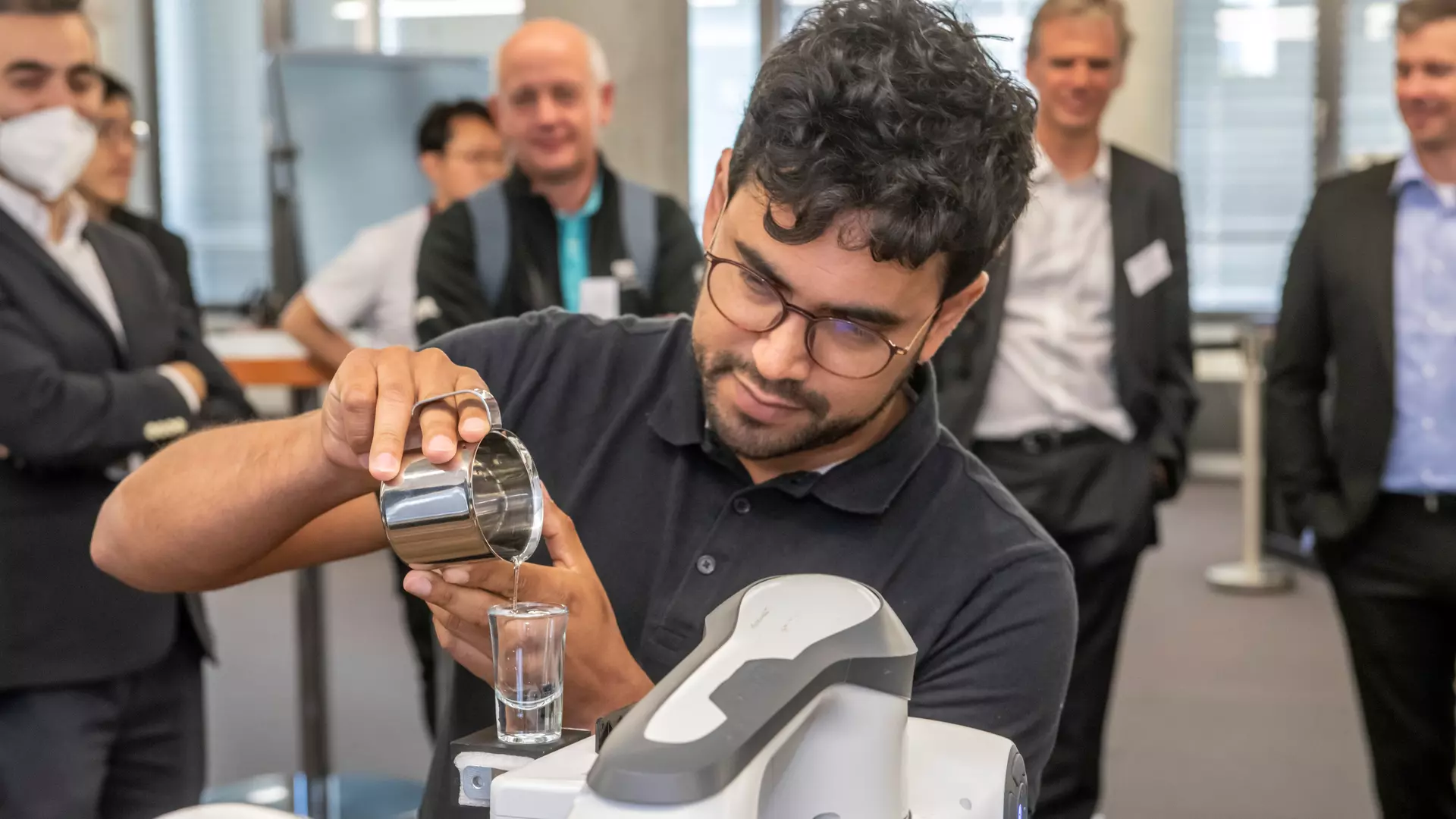
Dr. Luis Figueredo demonstriert, wie ein Roboterarm ein mit Wasser gefülltes Glas transportiert. Image Credit: Wolfgang Maria Weber / Technical University of Munich.
The new study questions if a robot can prove to be a better waiter compared to a human being. For this question to be answered, Dr. Luis Figueredo, a senior scientist in the group of Professor Sami Haddadin, creates a robotic arm from the specialized robot maker Franka Emika on a table and gets hooked with a computer.
The hand of the robot holds a glass filled to the brim with water, increases it, and further rocks it to and fro without even spilling a drop.
“And it does it faster and more safely than a person,” states the researcher from the Munich Institute of Robotics and Machine Intelligence (MIRMI) of TUM.
Copying the Motion of the Moroccan Tea Tray
The team's mathematics was based on a Moroccan tea tray that employs the principle of a spherical pendulum. With the help of the doctoral candidate Riddhiman Laha and master’s student Rafael I. Cabral Muchacho, Figueredo fixed the spherical pendulum’s dynamics into the control software of a robot.
Also, it implies the fact that the movements of the robot have been limited by the fundamental principles of geometry. With the help of his team, he also combined the proper speeds, angles, and accelerations into the model
When you understand how a pendulum moves and know how it works, it is suddenly quite simple.
Dr. Luis Figueredo, Senior Scientist, Technical University of Munich
The Mathematics of a Pendulum: A Simple Solution to a Complex Problem
The science of “slosh-free movement” is considered to be a complicated field.
Most approaches have focused mainly on limiting acceleration to keep the sloshing of liquids under control. Or they have worked with fluid dynamics to calculate how these substances behave in order to predict the trajectories. That takes at least a few minutes, if not hours, and the result is still uncertain.
Dr. Luis Figueredo, Senior Scientist, Technical University of Munich
Applications in Healthcare and the Transport of Hazardous Liquids
Being a practical application, the researchers initially visualize groundbreaking robotic support for aged people and those who are in need of nursing care.
But industries involved in the transport of materials posing biological and chemical hazards would probably be interested in a solution like this, too. For that we need better perception.
Dr Luis Figueredo, Senior Scientist, Technical University of Munich
Safety remains a crucial point: a robot must flawlessly be capable of identifying hazardous situations.
Then, sensors would allow the machine to not only identify people but also to anticipate their movements.
To date, the robot is functioning with “tactile sensors” as a safety mechanism. In the present slosh-free mode, the robot arm directly retracts when it senses the collision.
Turning robots into skilled waiters
Video Credit: Technical University of Munich.